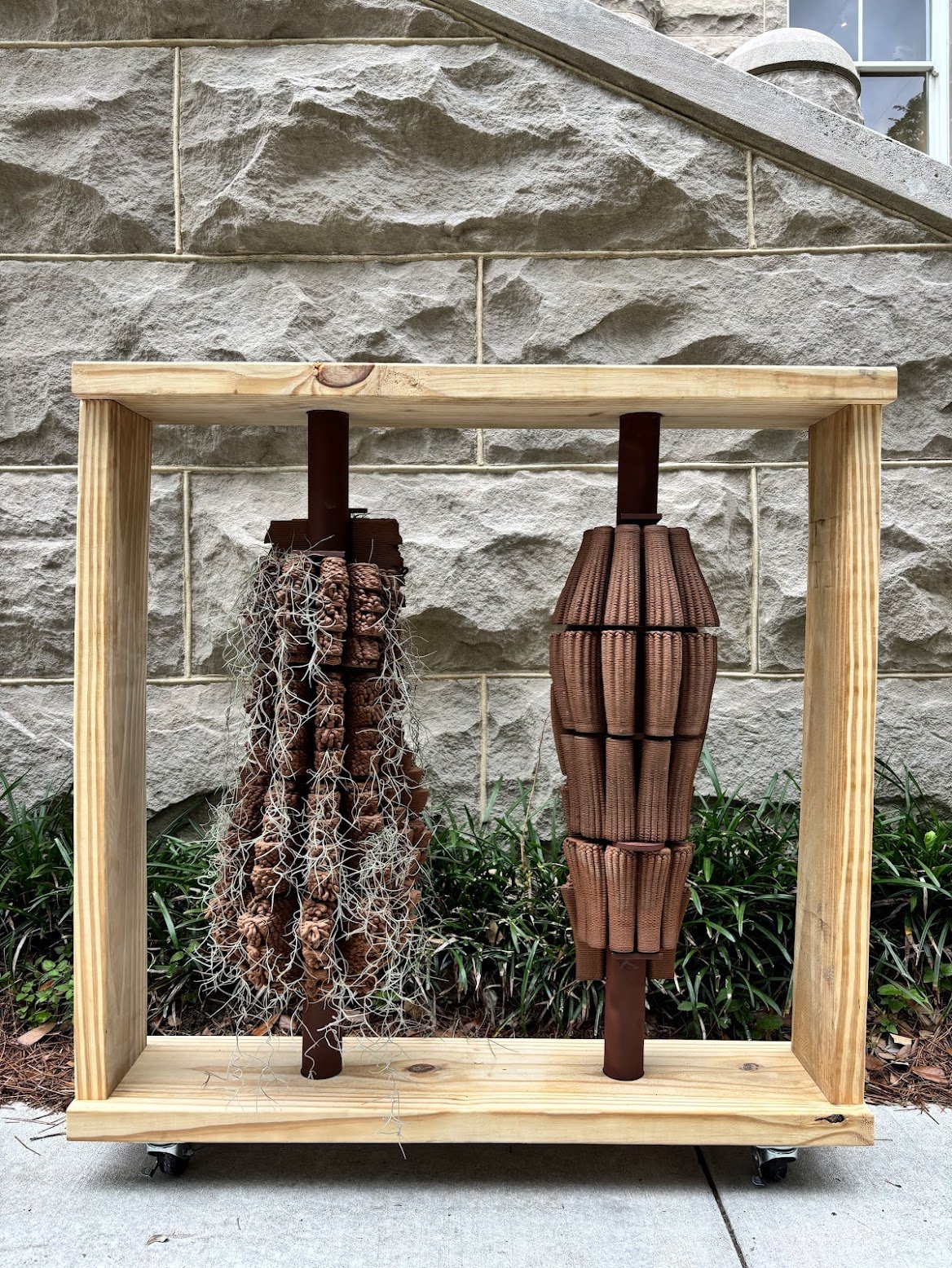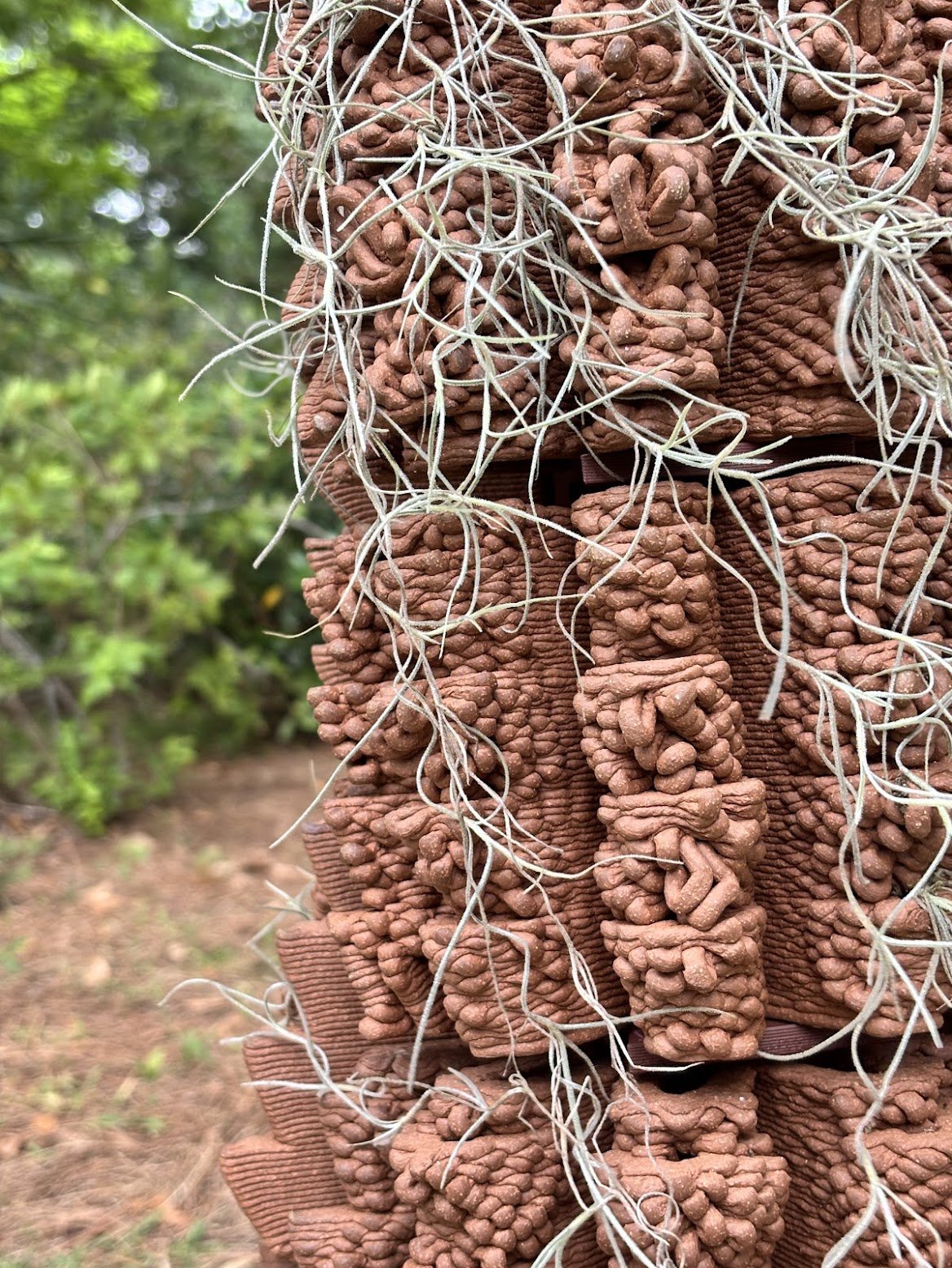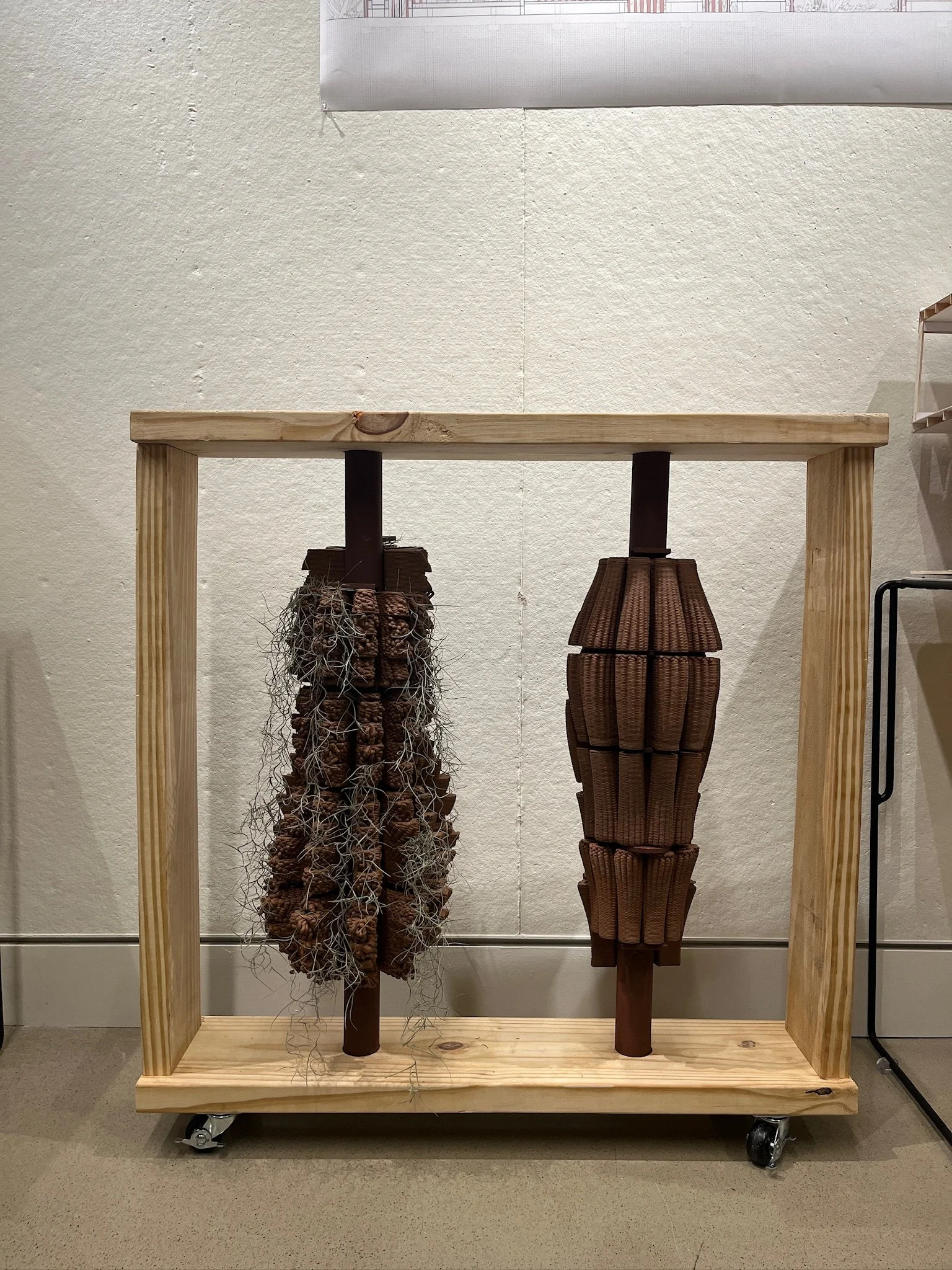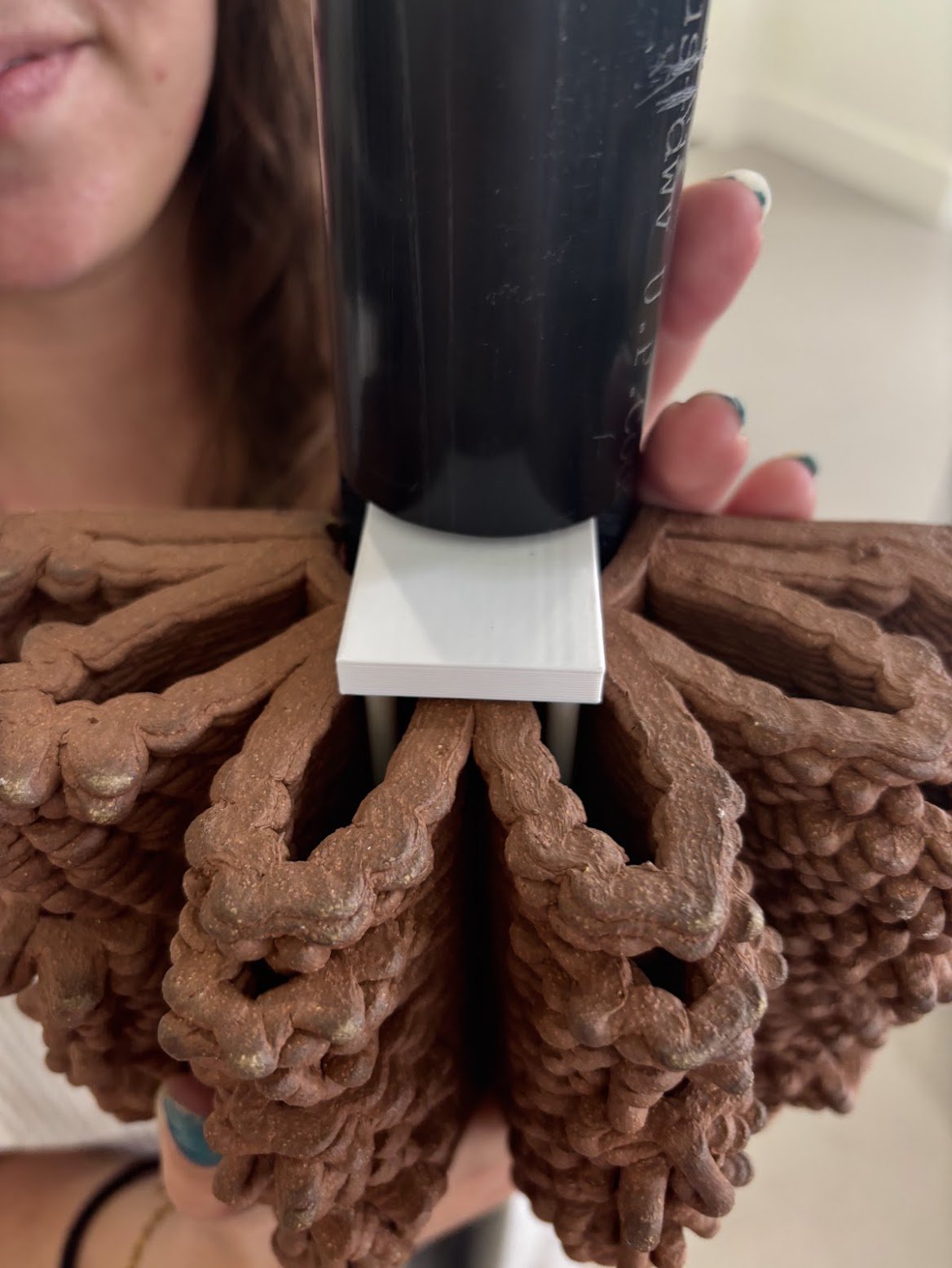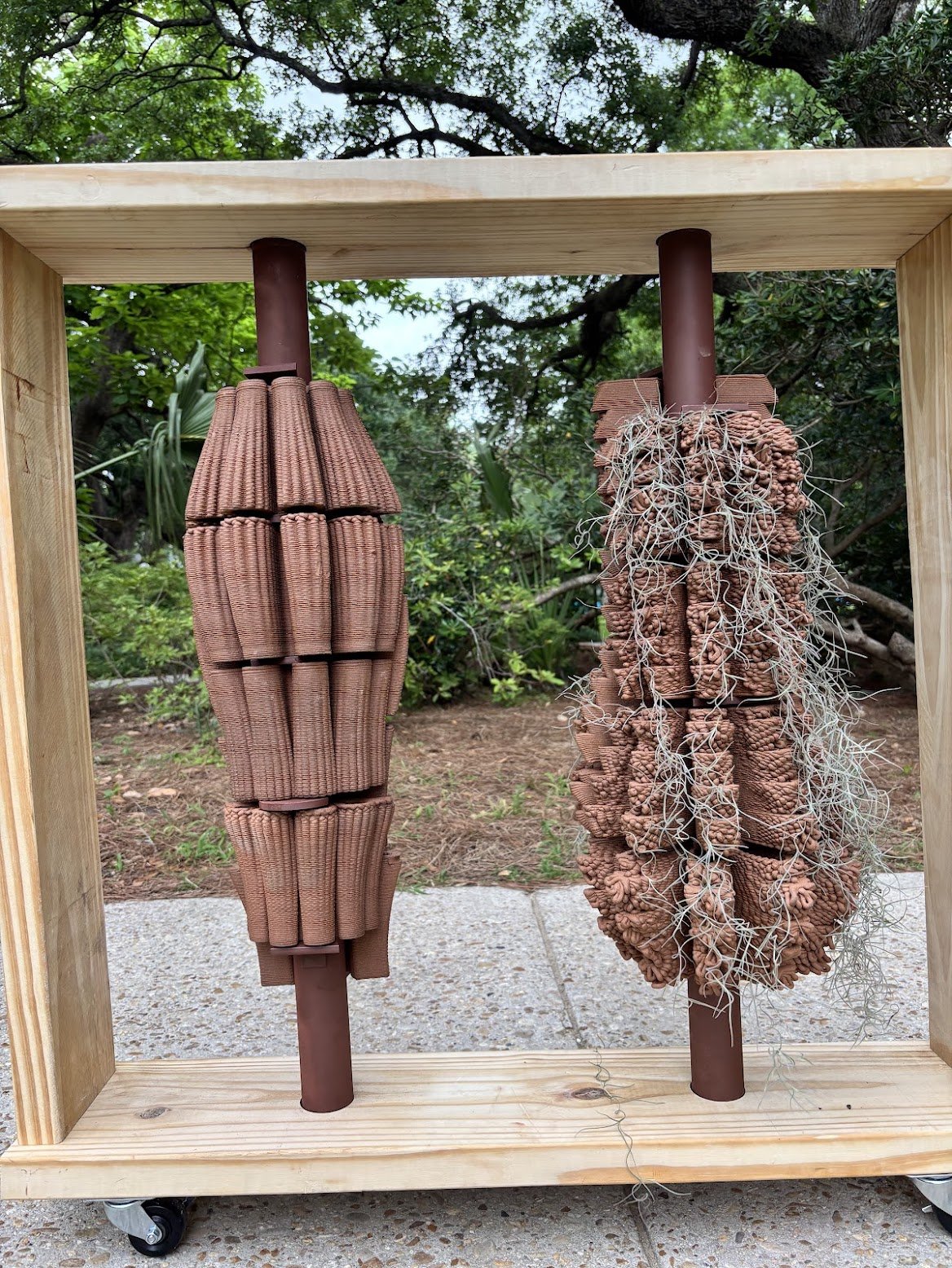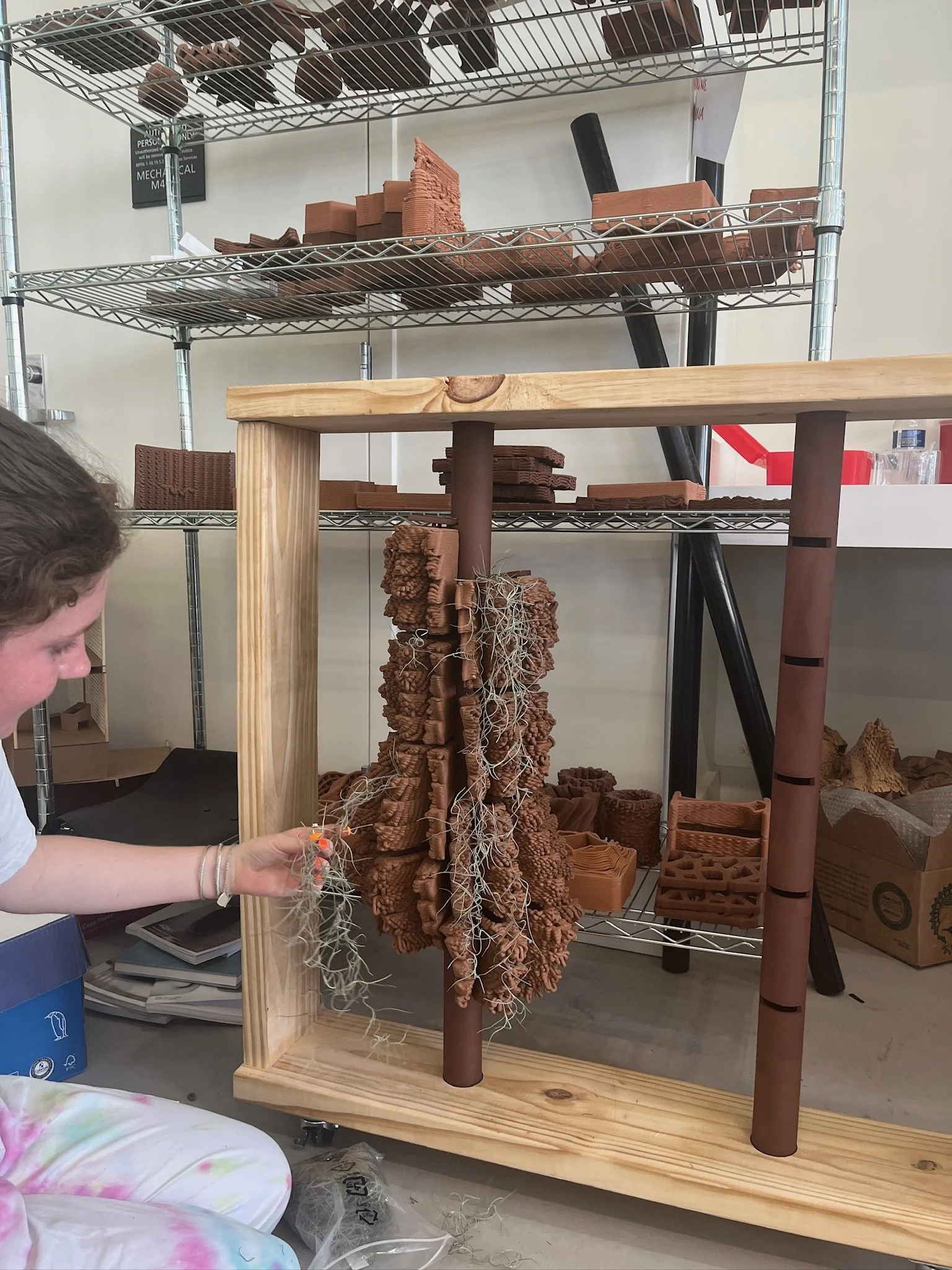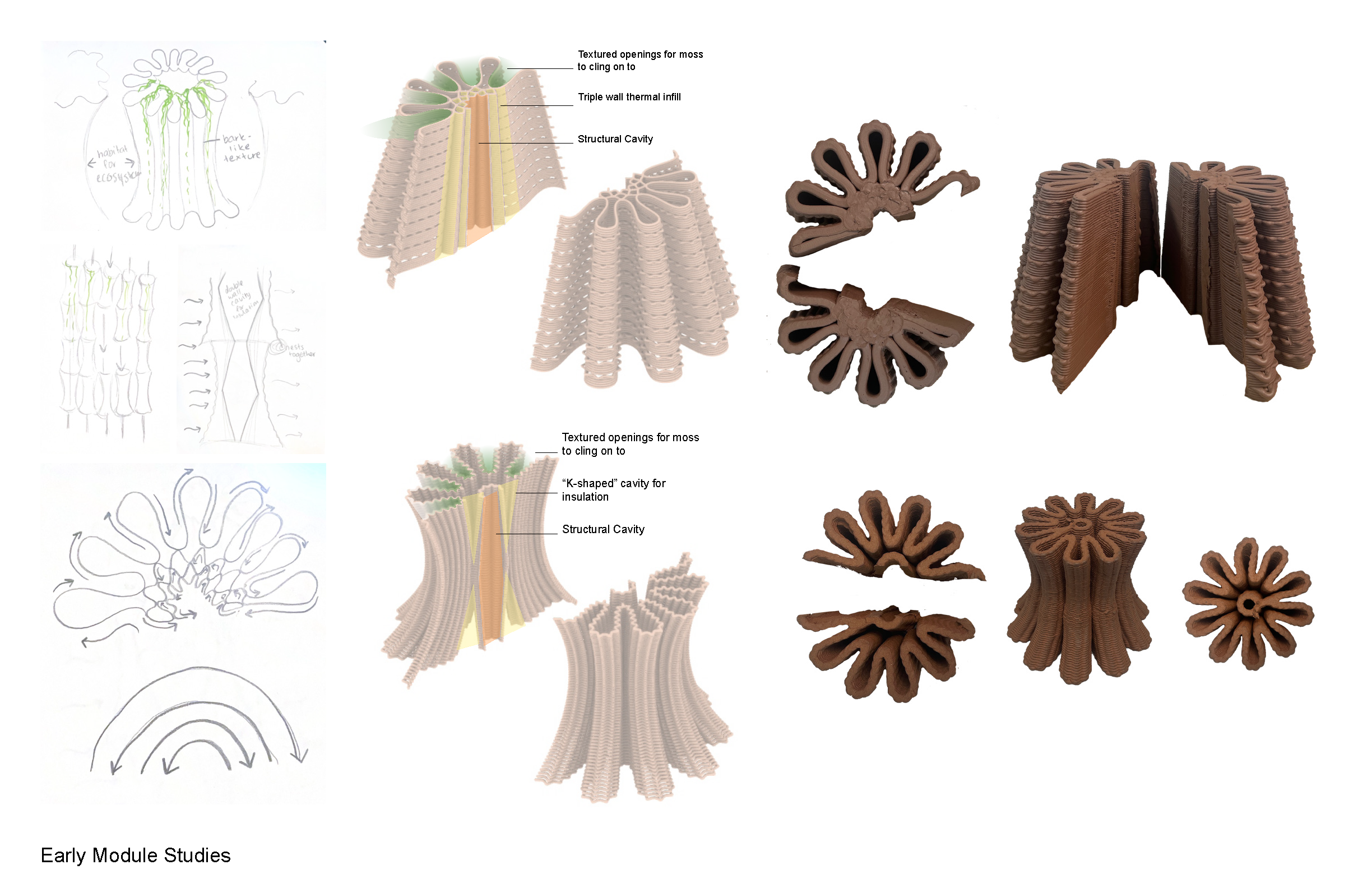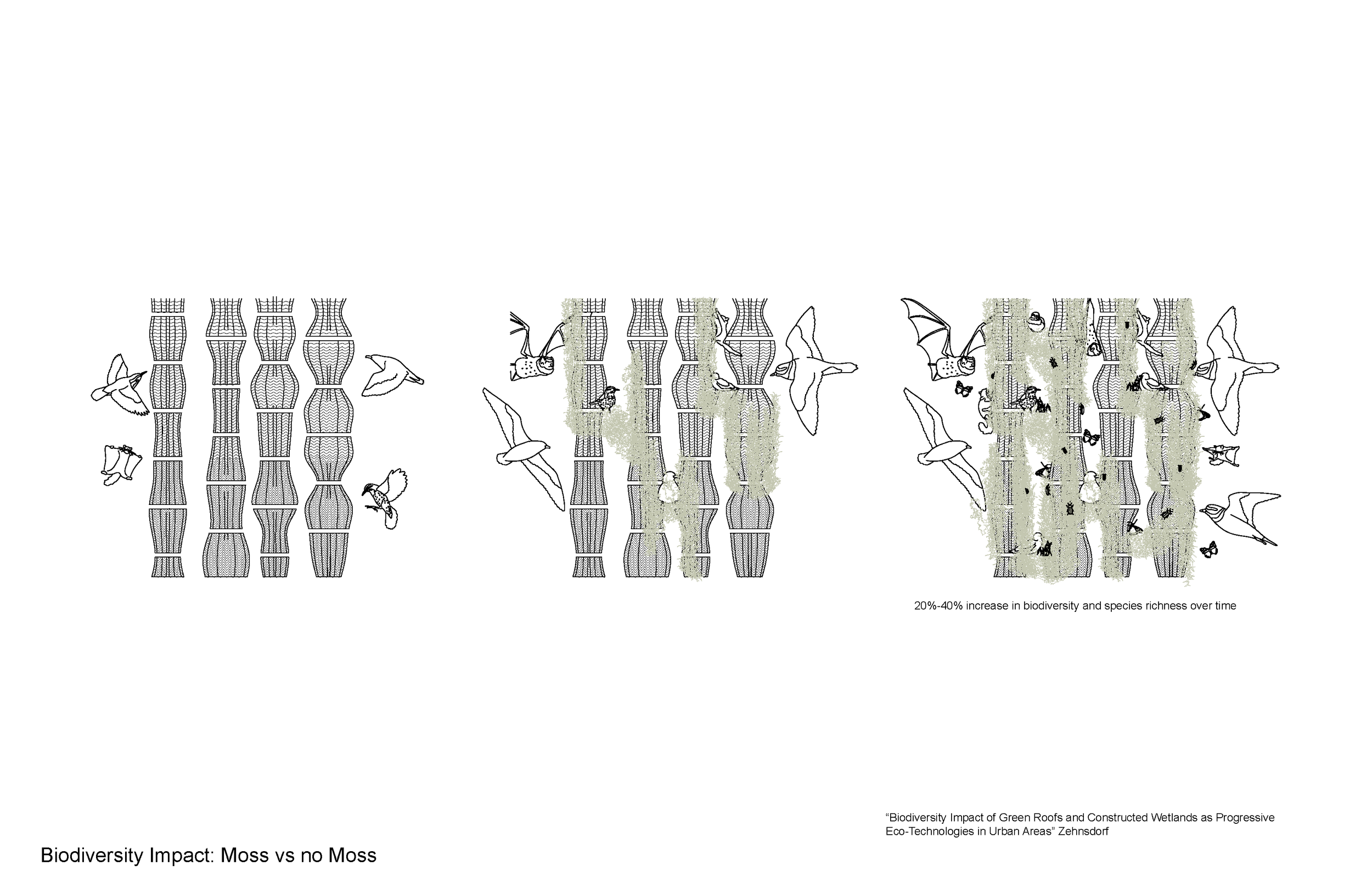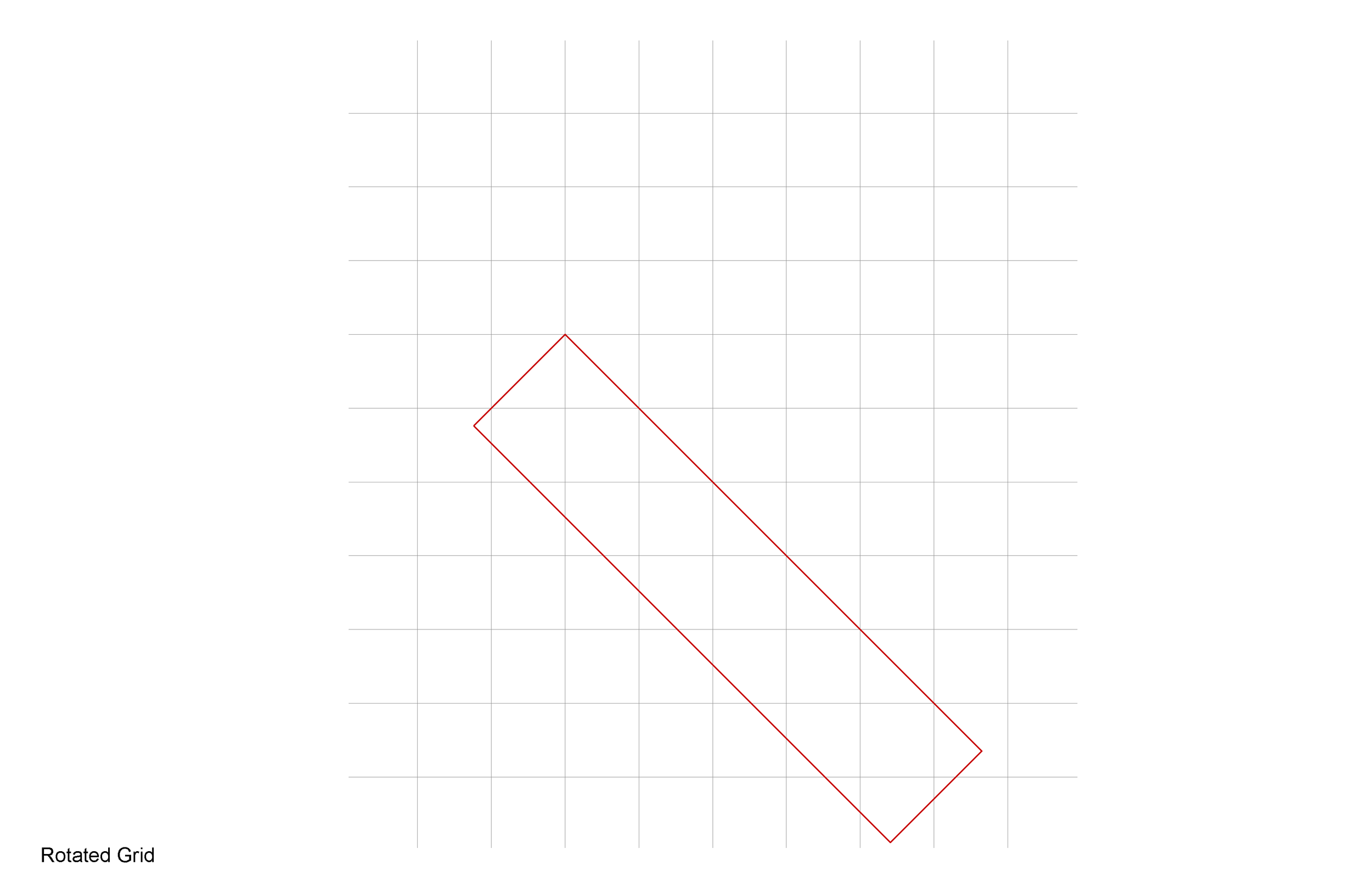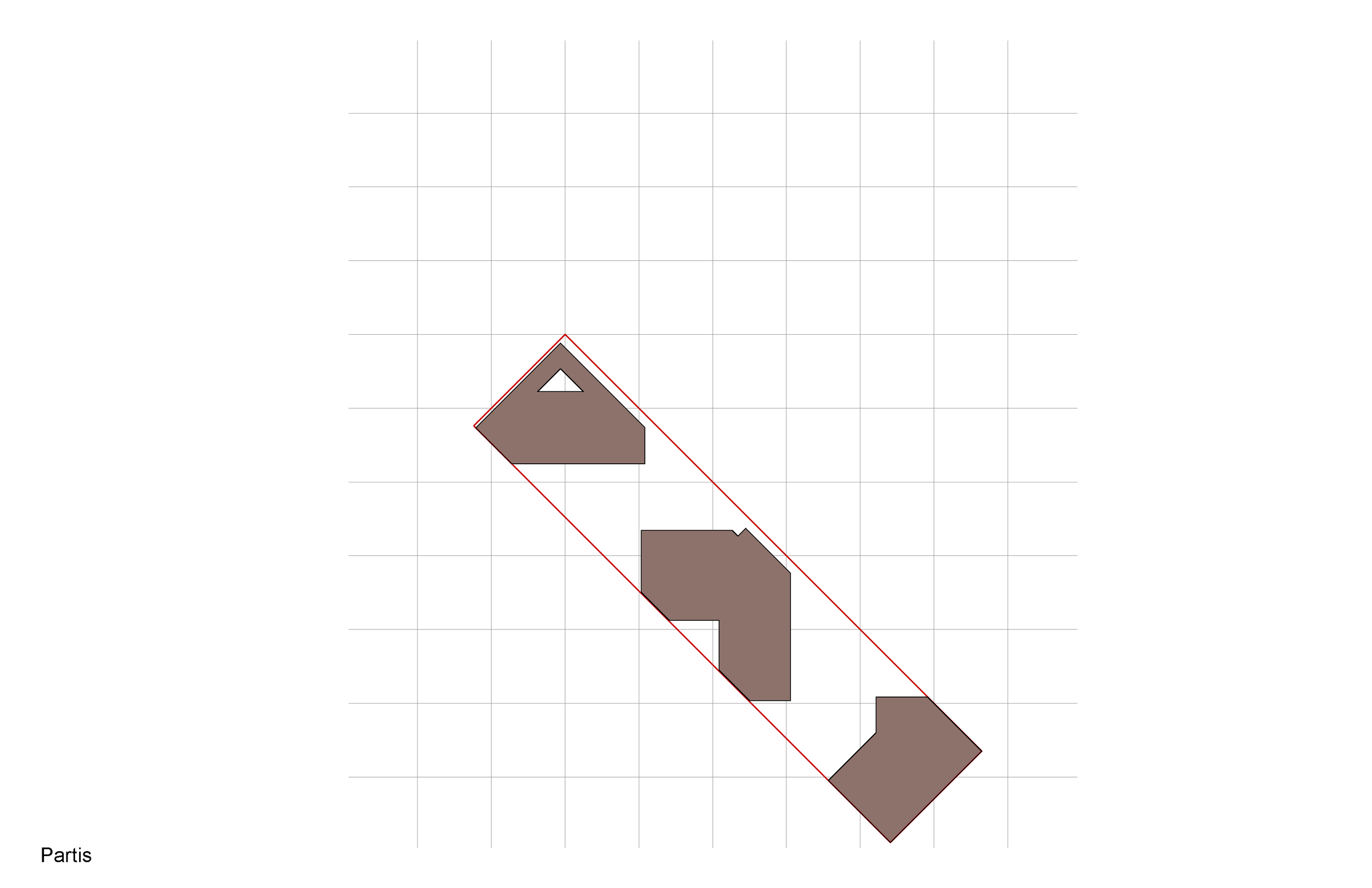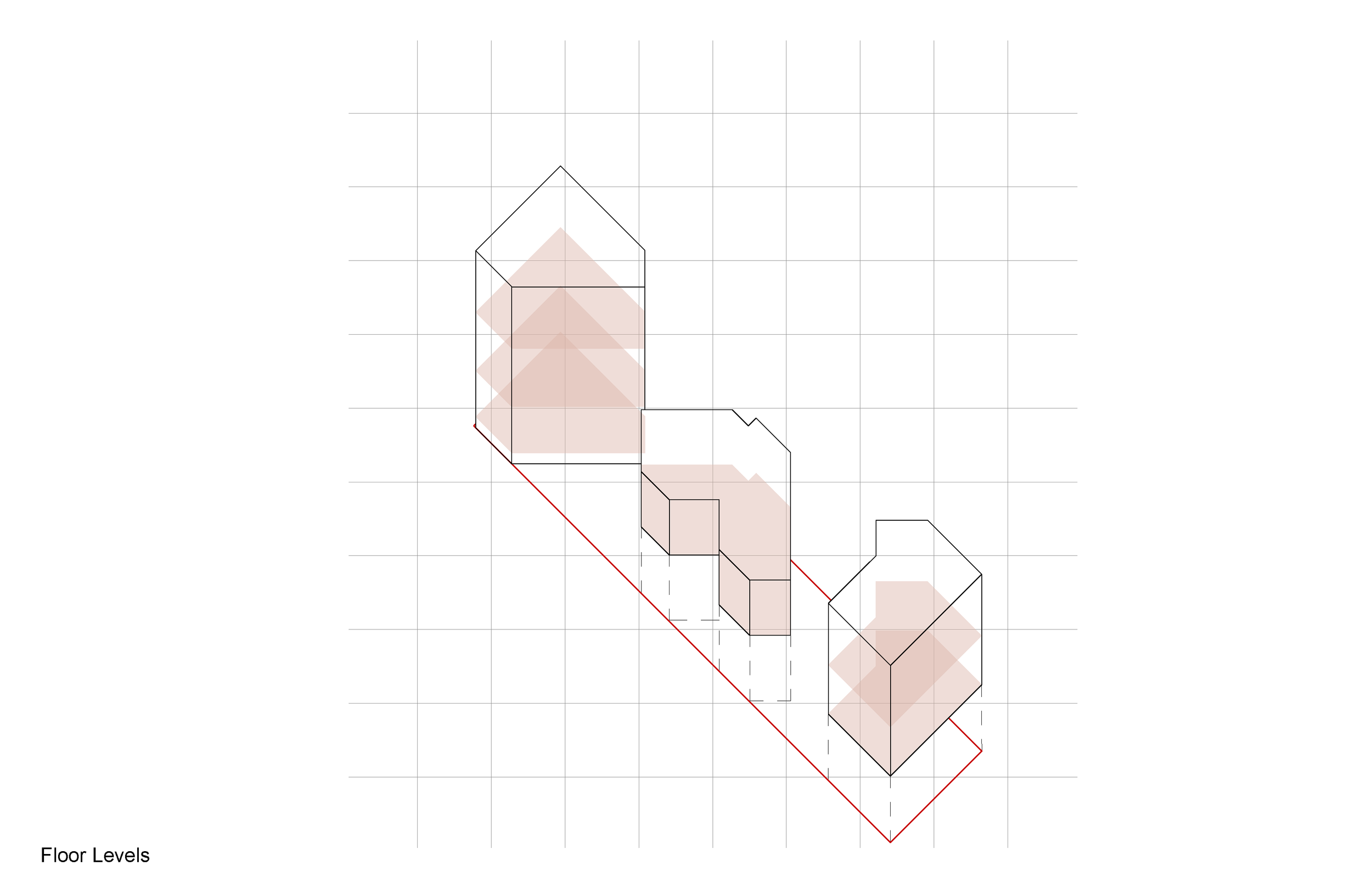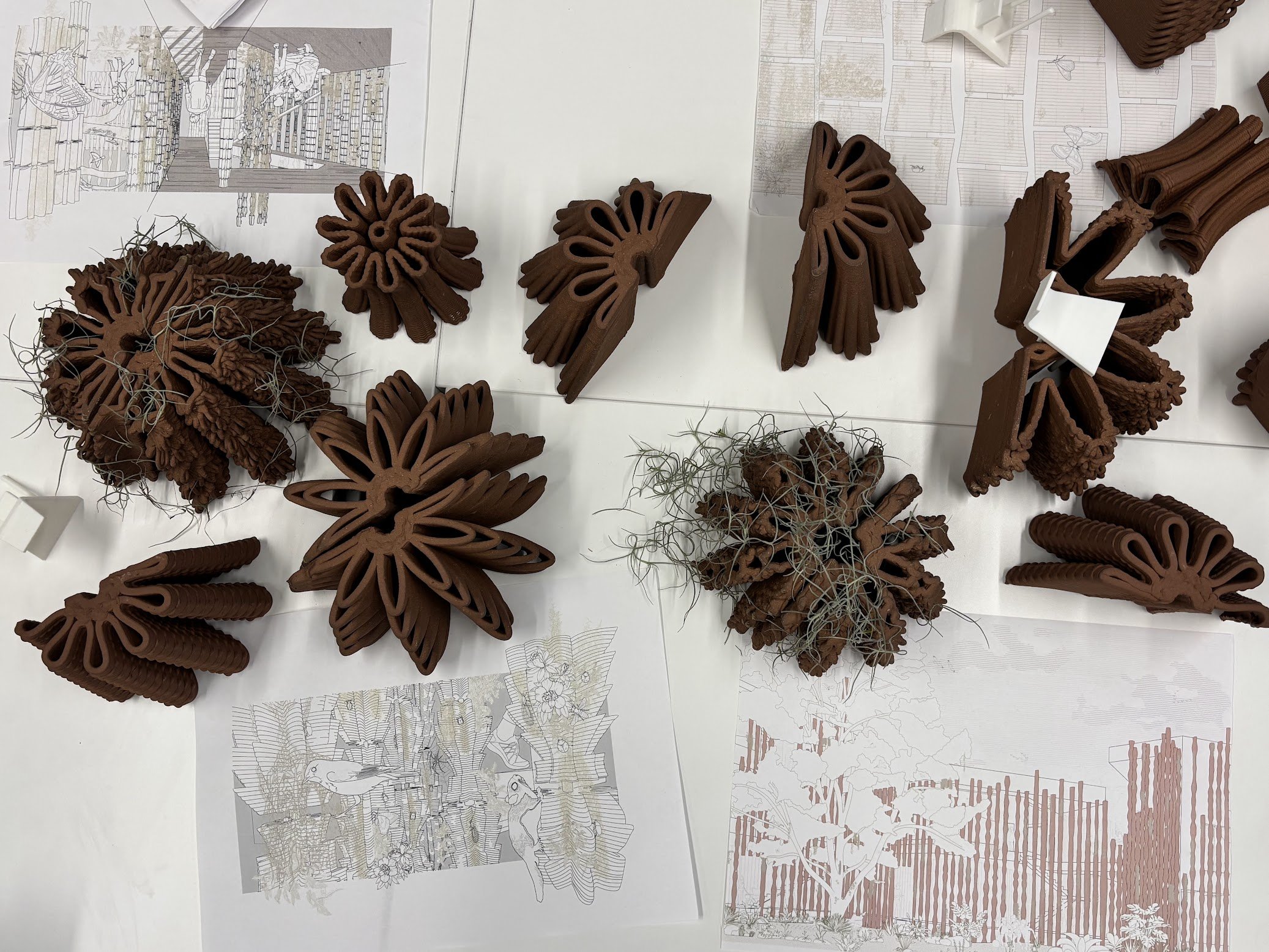
Aeroponic assemblies
Columns for coHabitation and climate adaptation
Caroline Cameron and Cassiana Mefrige
For the last few weeks of Ecological Tectonics studio we paired up and were aimed to create a facade system that aids in an area of ecological research. My partner Cassiana Mefrige and I chose to create a facade that acts as habitat for non human species as well as creating microclimate cooling effects. This project consists of two dwellings linked by a shared, communal living and dining space. The architecture is organized by a system of columns that serve both as structure and enclosure, supporting the building but also creating a series of exterior courtyards for both humans and more-than-human species of plants and animals. The columns are clad in 3D printed ceramic modules that help to regulate thermal conditions and are optimized to support habitat for Spanish Moss, a common epiphyte in New Orleans that typically grows on trees but can also attach to artificial structures. The moss habitats help to reduce humidity, support ecological diversity, and create cooler microclimates that help address the urban heat island effect by absorbing moisture, providing shade, and increasing albedo. The project explores how the architectural typology of the column might take on a more active role in ecological and climatic processes.
Spring 2025 - Studio 4042 - Tulane University
ModelS
This model shows a portion or chunk of our dwellings at a 1/2”=1’- 0” scale
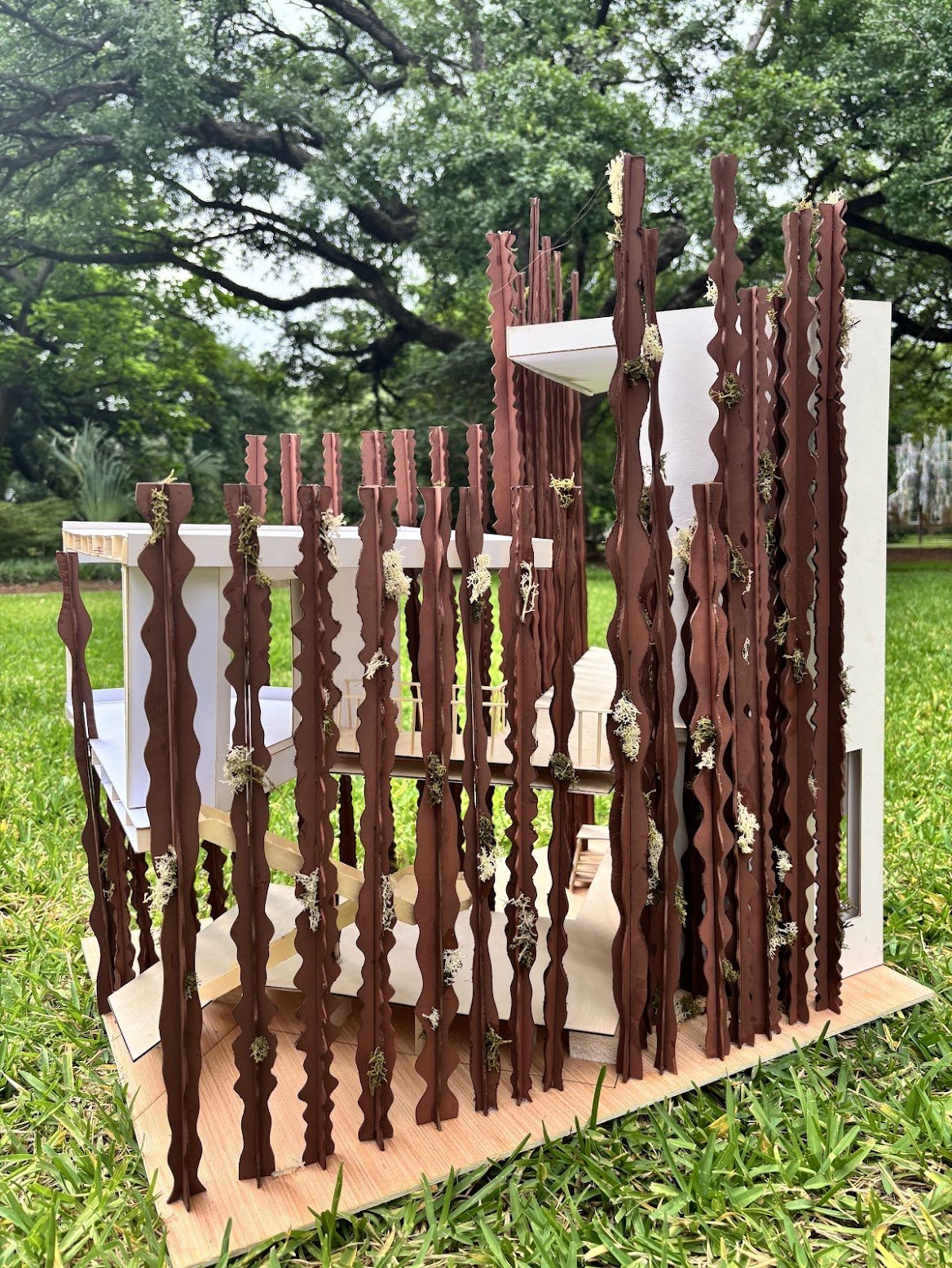



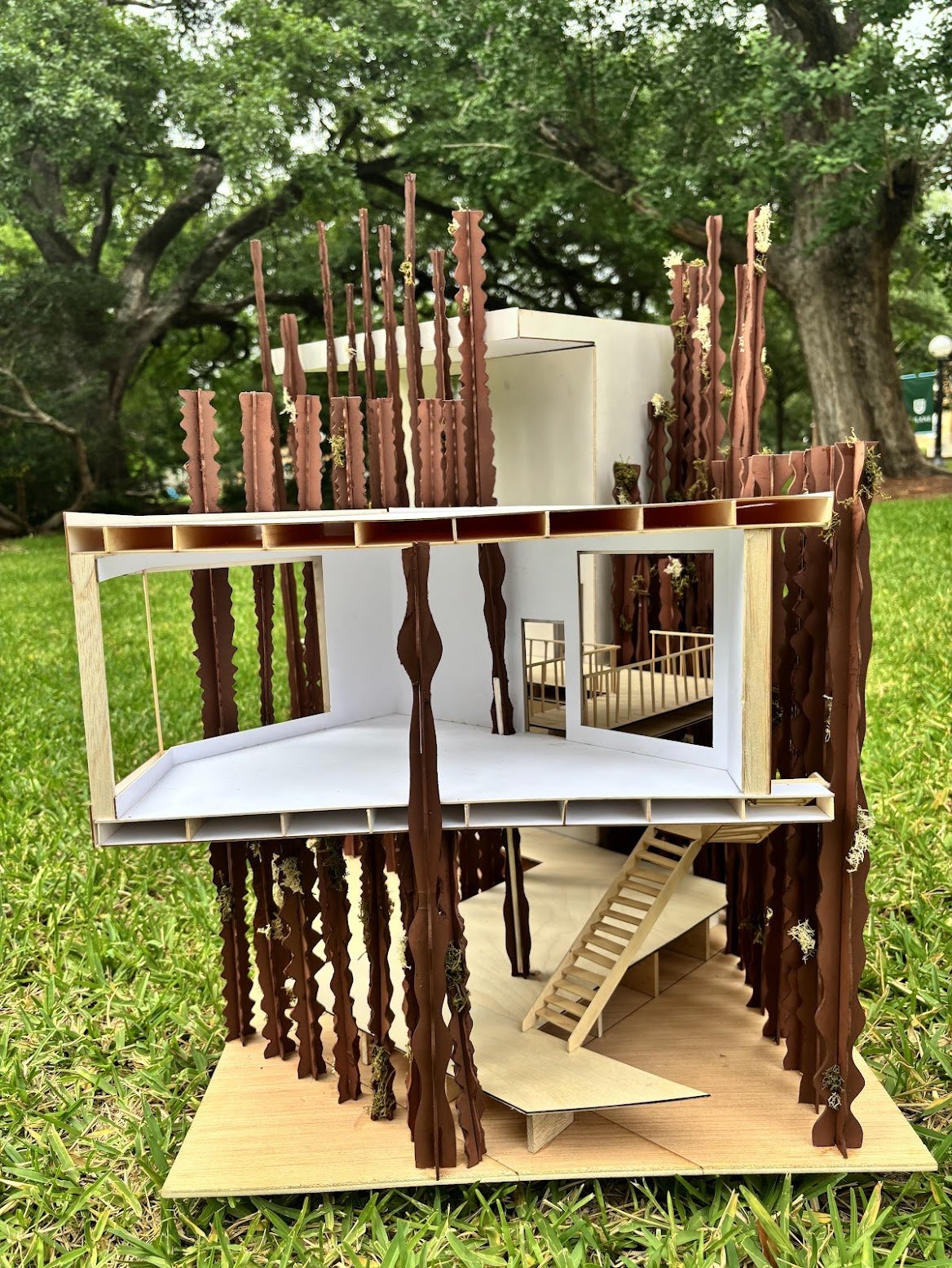
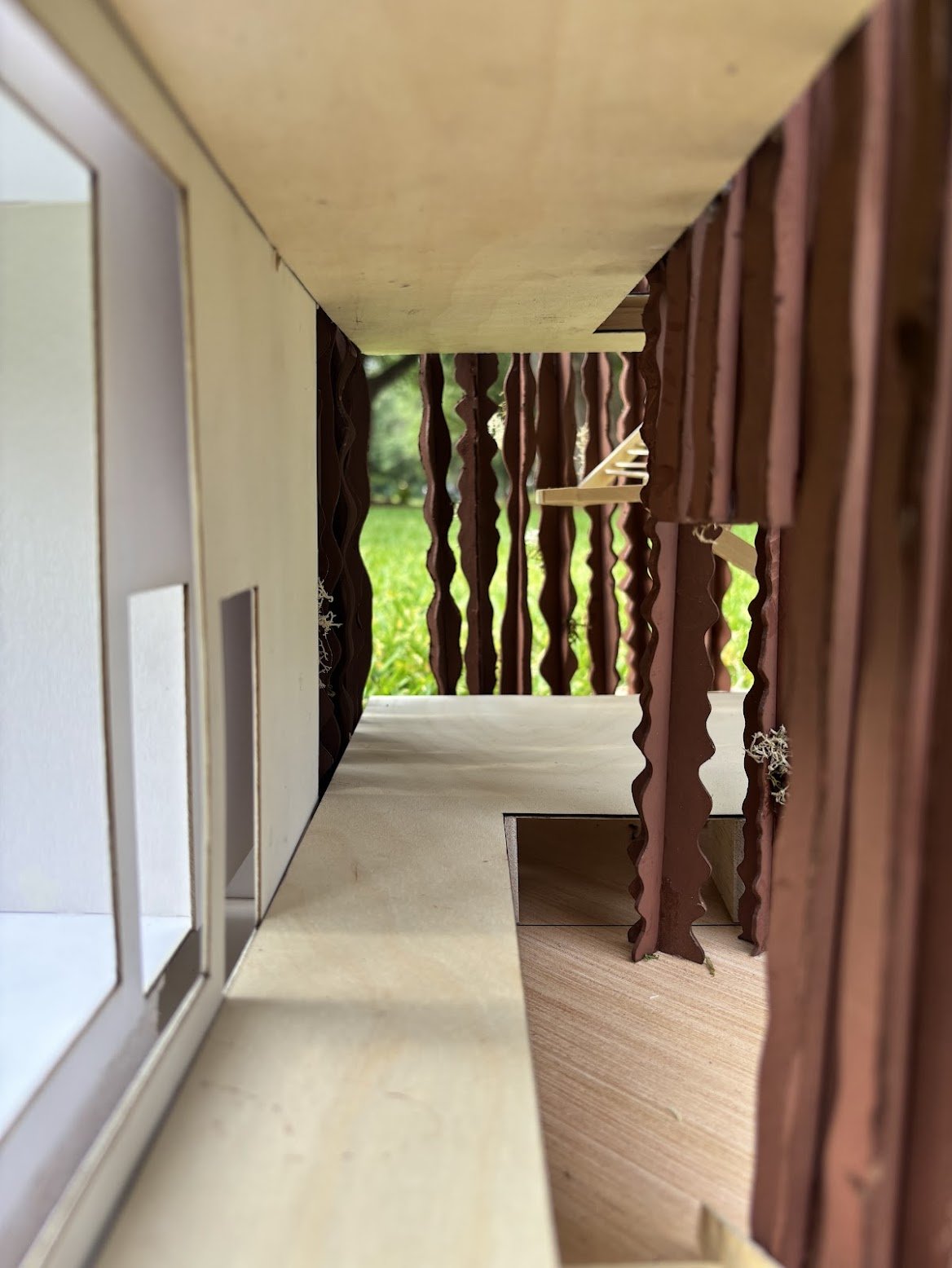
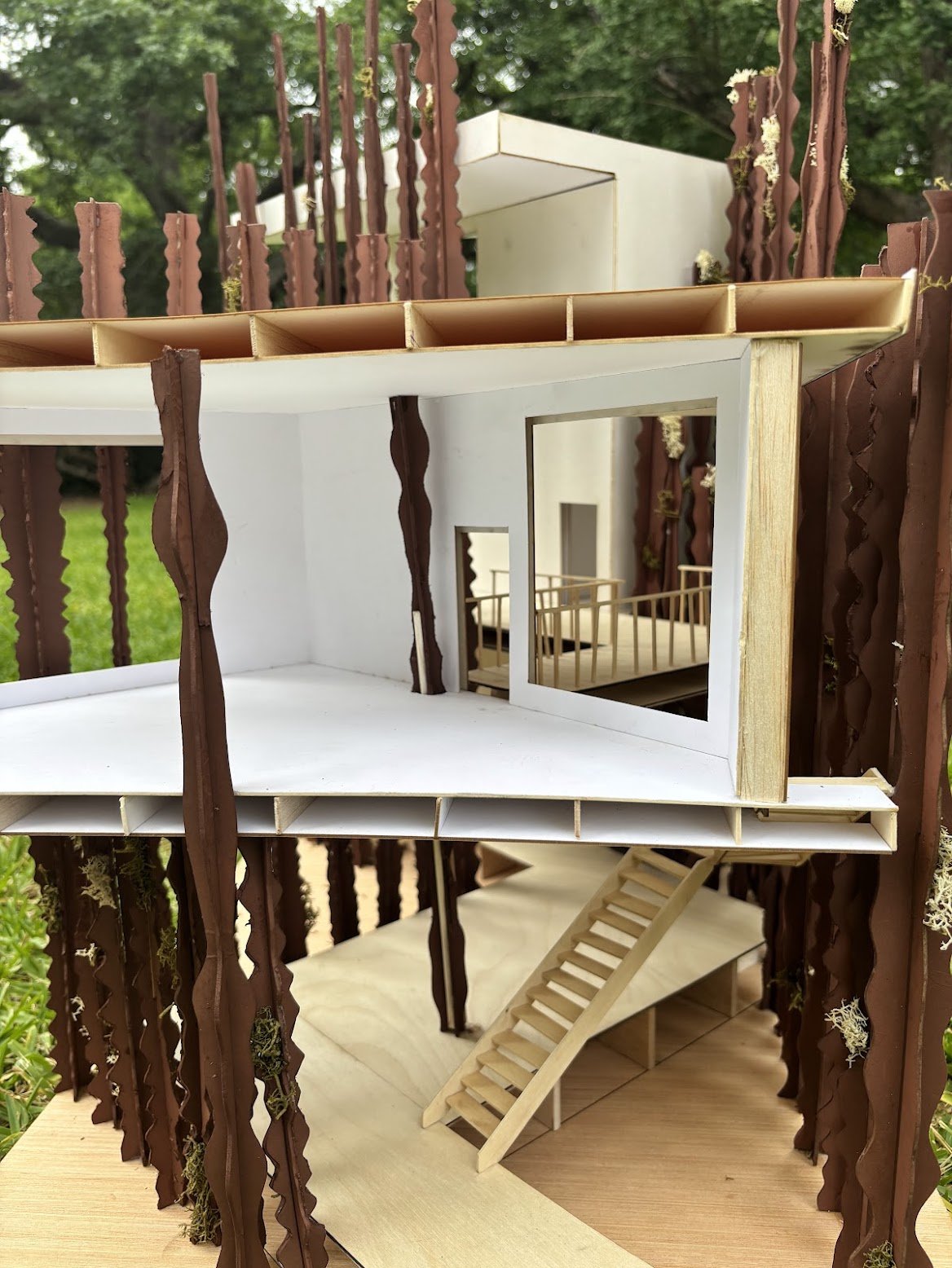
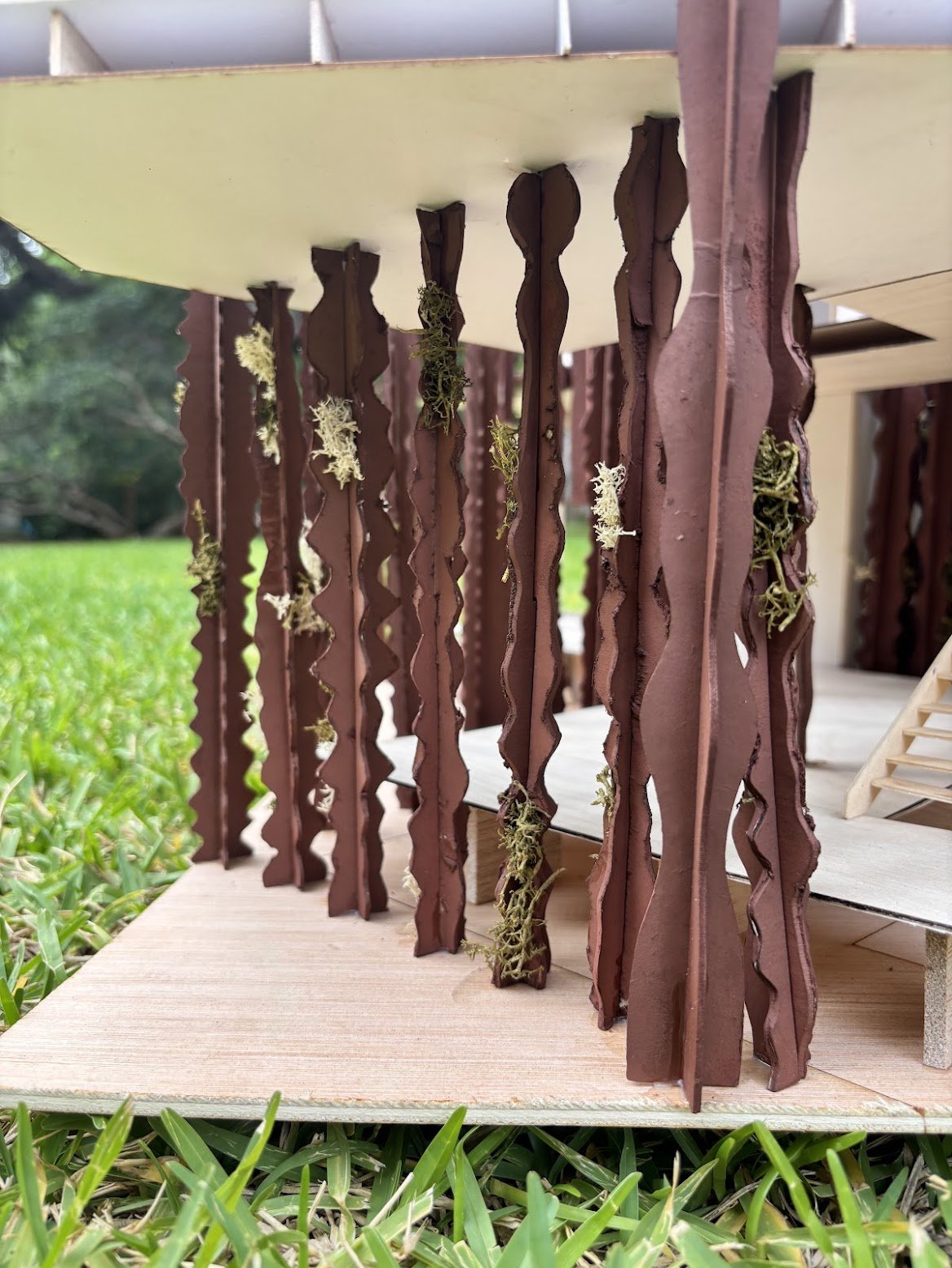

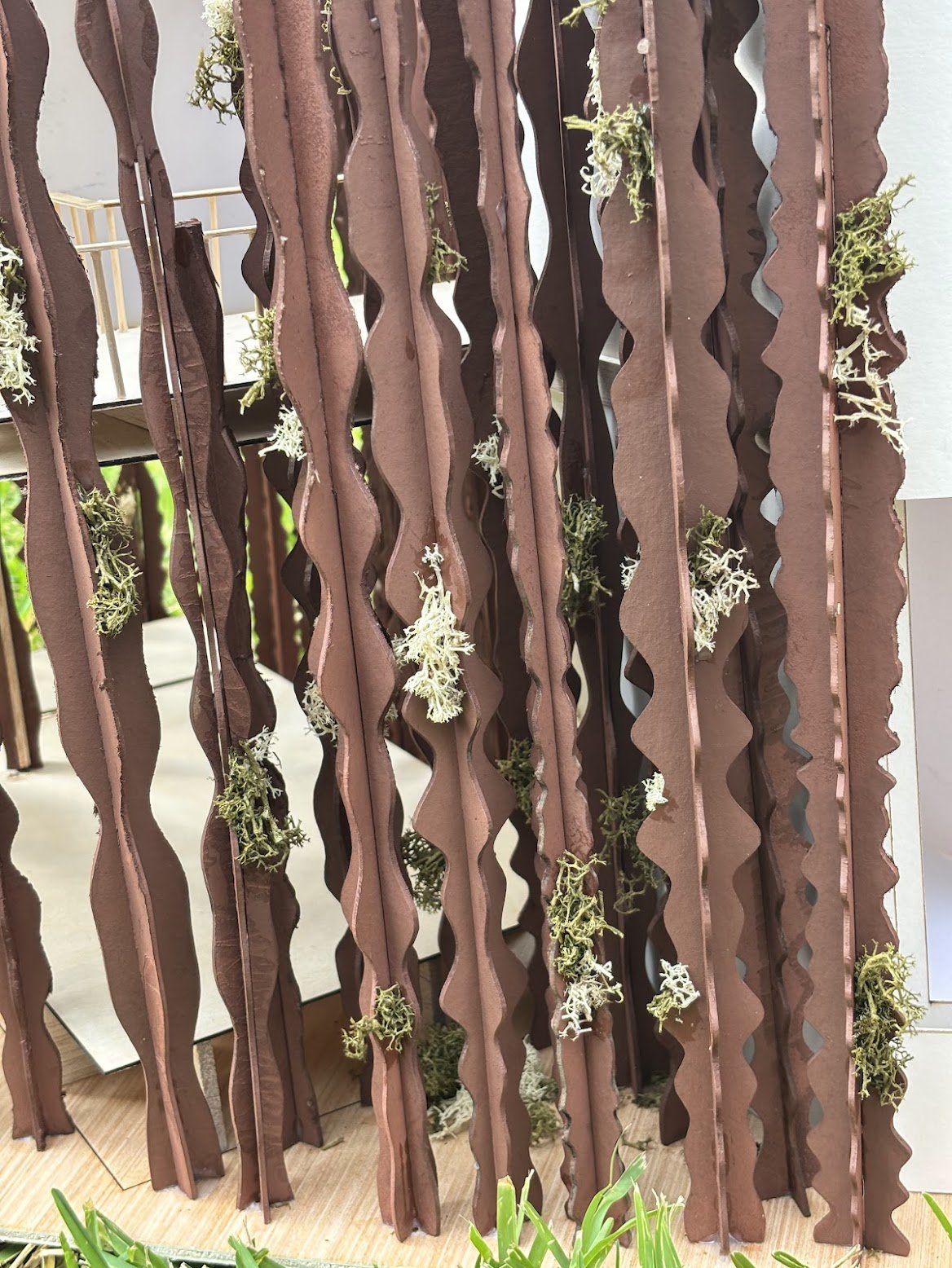
Prototype
Our built column mock up shows our Spanish moss optimized column and our thermal adaptation column. They are made out of 3d printed fired ceramic modules and we subbed what realistically would be a steel tube with pvc pipe in the core of the modules. The modules are supported and attached by custom 3d printed plastic clips that perfectly hold each module back to the pvc while simultaneously acting as a shelf for the module above.
